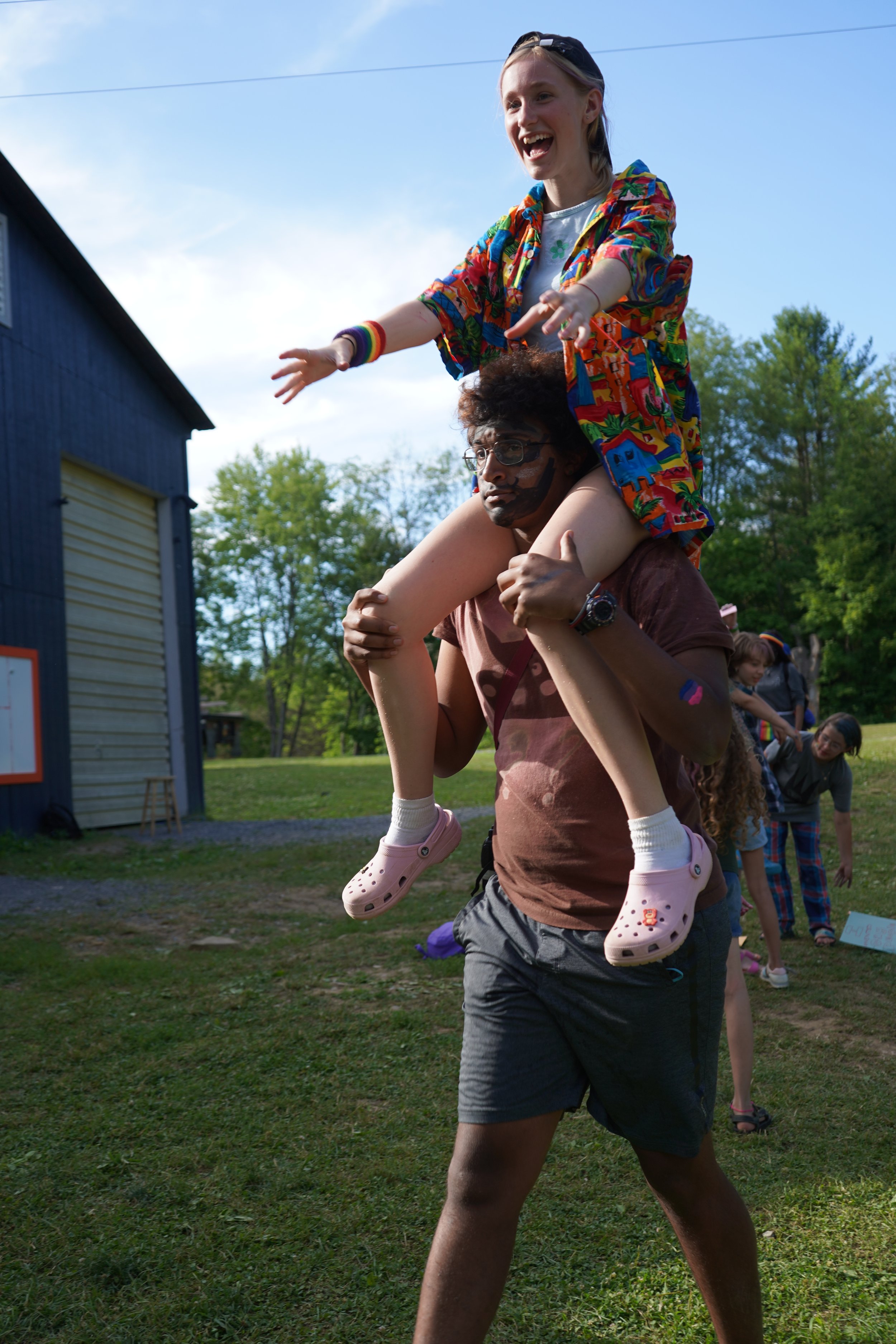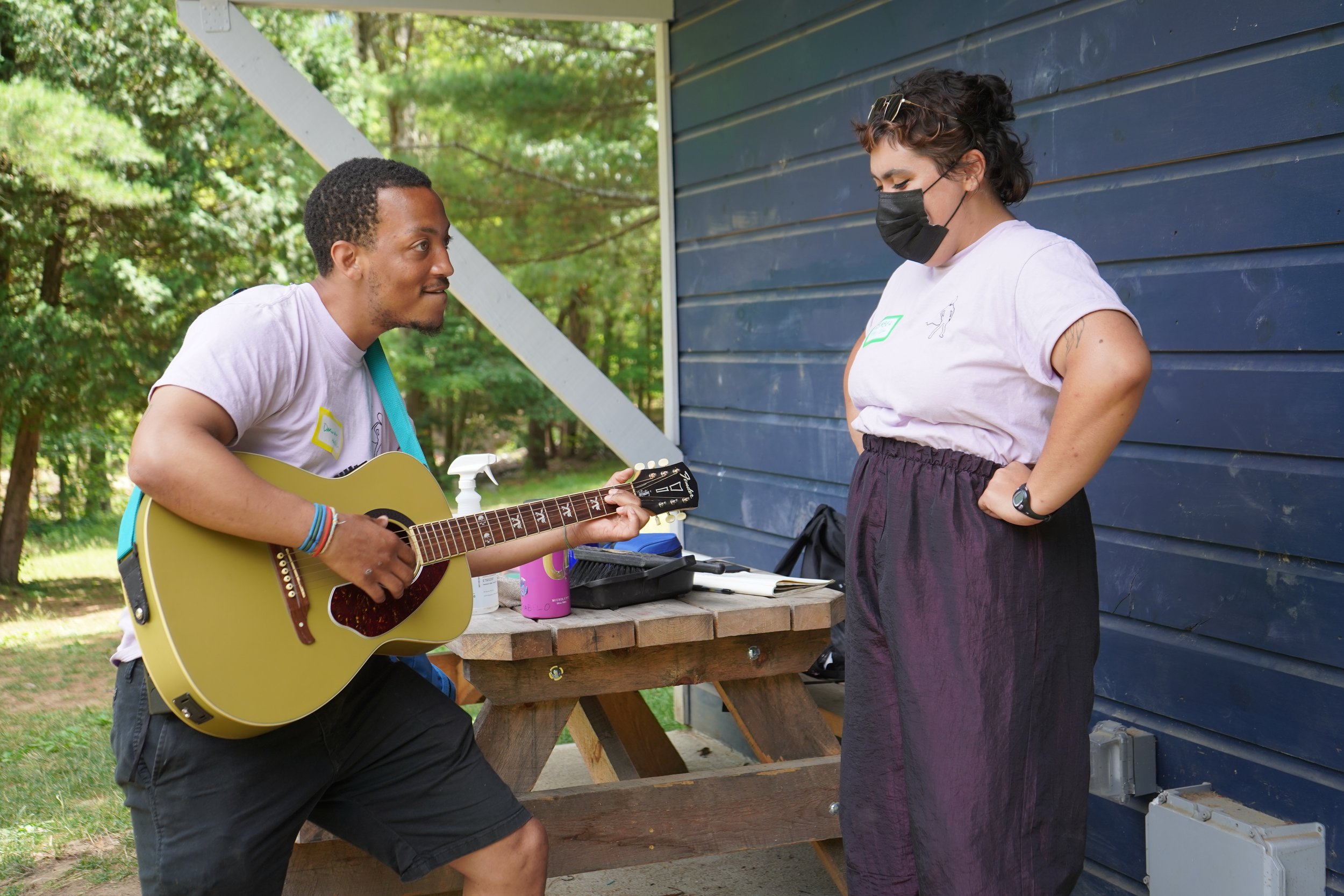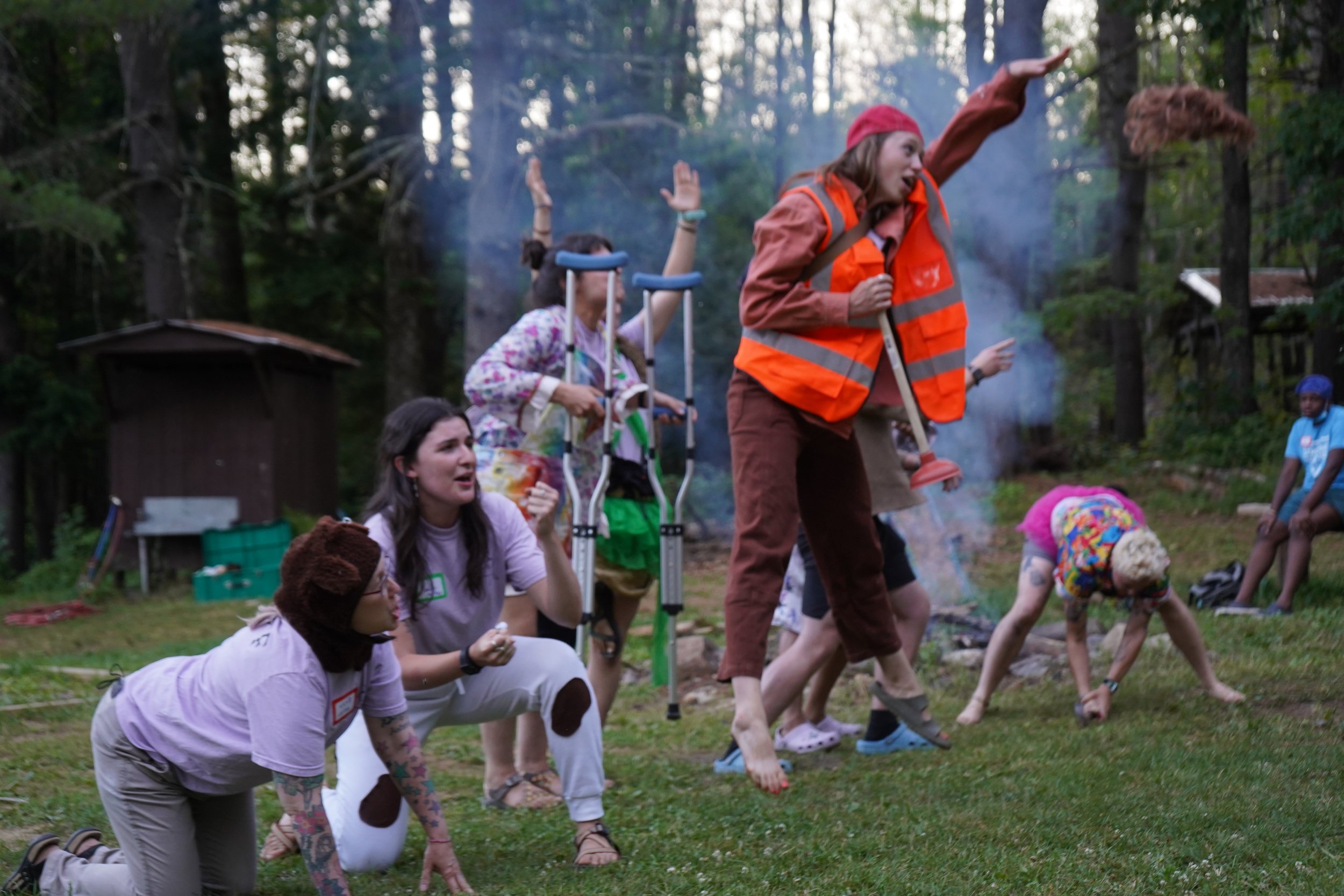Staff Circles: Do They Really Work?
This week, Laura challenged us all to write a blog post. "It can be about anything you want. Tell a story, find an old blog post to respond to, just write." This is the first story that came to mind.
During Restorative Justice training, we talk about using The Circle System to solve conflicts. Participants nod along and take notes as we explain how we walk campers through the process. But then they inevitably ask:
"What about staff?"
What they're really saying is "Okay fine- but if it really worked, you'd solve staff conflicts with circles." And we do. I can think of three circles from this past season that had a profound and lasting effect on me (two of which included me as a participant). This is the story of one of them. I asked the two staff members involved if they were okay with me sharing. They both said yes and even informed me that I didn't have to use fake names. Even so, everyone in this story has an alias (though these nicknames will be obvious to Summer '22 staff) - shoutout to my Lego Barbie and Caveman M.
Love you guys. Thank you for your humility & openness.
Let me set the scene. It's the last session of camp for the season. We've been here, including staff training, for 8 weeks already. We're tired. Some of our staff have had a session off, but even so it has been a long summer. We have a young staff this summer, but there's something special about them. Most of them have grown up as campers at Stomping Ground, and this is the first year they've seen the other side. Instead of a lightning-fast two weeks getting to do anything they want, they're the ones making the magic for other kids. It's rewarding work, but exhausting.
Session four is when the cracks start to show. Luckily, we have each other.
If you'd asked me in the middle of session three, I would've told you that Bryan and Cate are best friends (perhaps even more; you know how camp is). I knew this when we made our staffing list for session four. Bryan and Cate were in the kitchen together, with two of their other best friends- what could possibly go wrong?
By the start of session four, we all learned that whatever they were before, they were no longer. We were a little concerned, but we'd made our staffing arrangements. Everyone in the kitchen managed to work together until one day when it just became too much.
At 11:45 pm, I get a walkie call.
Sabrina: "MK, are you on?"
Me: "Go for MK, go to 2."
Sabrina: "Cate needs to talk to you."
Me: "...Could we talk tomorrow?"
Sabrina: "No, I think it should be now."
Me: "Okay, meet me at the dining hall."
I meet Cate and Sabrina (the roommate that walkied me) at the dining hall and I learn that even physically being around Bryan has become absolutely unbearable. He's constantly talking about her to his friends, even if she's in the same room. Cate explains that she loves working in the kitchen but hates being in there whenever he is. She doesn't event want to go back to her bunk because he's in the same building.
Sabrina, Cate and I move her stuff to a different building and set her up for the night. We sit with her and calm her down. I tell her that the only option is for us to have a circle with Bryan, but that's for tomorrow. I fire off a few texts to set up the circle and then I go to bed.
Going into the circle, my understanding of the situation is that both caused harm, and both were harmed. I've recruited Randall to help me run the circle. He had a little pre-conference with Bryan and I had a little pre-conference with Cate. Randall and I sat with them not to point fingers, not to take sides, but to set expectations and guide them through the conversation process.
The human inclination is to assign blame when that does absolutely nothing to foster healing. Healing comes when harm is acknowledged from both sides.
Cate, Bryan, Randall, and I sit awkwardly far from each other on the couches around the lodge. I explain the goal of the circle:
"What's obvious to us is that it's become unrealistic for you two to spend time together. We have 10 days of camp left and we would love it if you could both finish the summer here. But we can't do it like this. So. We are going to set some expectations and goals for the circle and see what you want to do."
Cate and Bryan hesitantly nod in agreement.
Randall and I explain the 3 basic expectations for a circle. They both already know this because they were campers before they even worked here, but we always list these at the beginning of every circle.
Your Choice (you both are willing to be here and can leave at any time)
One mic (don't interrupt each other)
Vegas rules (What is said here stays, what is learned leaves)
Together we set goals for the circle:
Actually talk about what happened (from Cate)
Talk about what the response was (from Bryan)
Find a way to at least co-exist until the summer is over (from Randall & me)
At this point, I take a risk.
I explain to them that while this circle is necessary, it is absolutely going to be awkward for them to have this conversation in front of their supervisors. I offer them the chance to have the circle on their own. Randall and I would leave the Lodge and check in on them in half an hour to see how it was going.
They both agree.
Randall and I remind them of the guiding questions we use for circles.
What happened?
How did that make you feel?
What do you need to happen next to mitigate further harm?
And with that, we leave.
Forty-five minutes later, Randall and I knock on the door and go inside. Cate and Bryan are smiling together as they look back up at us. It seems that they've talked through everything. They'd even come up with 5 agreements on how they will behave towards one another in the coming days.
When asked, Randall said "Circles truly don’t have to have the same process or feel repetitive in terms of how we go about them every time, if anything they command the exact opposite. The structure is meant to be malleable and as such should bend with the specific needs of not just the individuals involved, but other factors like the subject of the discussion itself."
Cate, in reflection, told me
"It made me see [Bryan's] perspective and realize that things I found seemingly innocent were hurting him. I don’t think we would’ve ever been friends again if it weren’t for not only the circle but the fact that you and Randall trusted us to do it ourselves."
Even though I didn't see the circle take place, I learned something valuable: the process works because we practice it. The reason we were able to leave them alone and trust them is because they knew the process of having a conflict circle. As far as we know, the circle didn't follow the traditional route, but the magic is that it didn't have to.
It works because we practice it.
MK is a director at Stomping Ground. They love climbing things, chasing children in CTF, and will pet any animal that will let them. This year, they are working with staffing, programming, and logistics.






